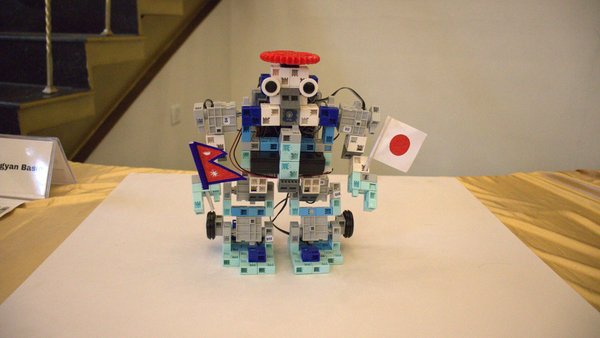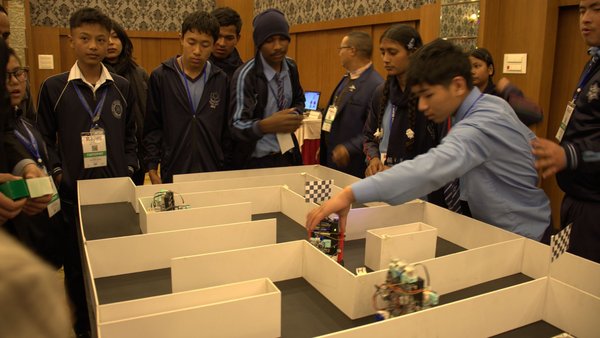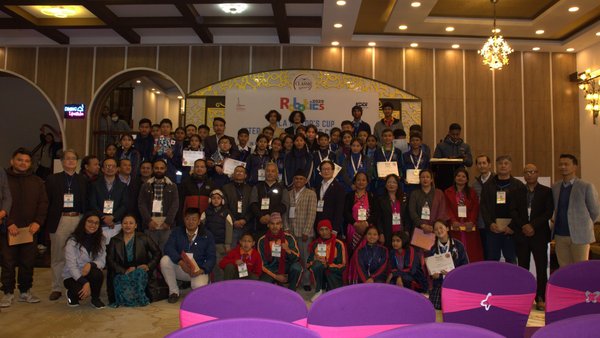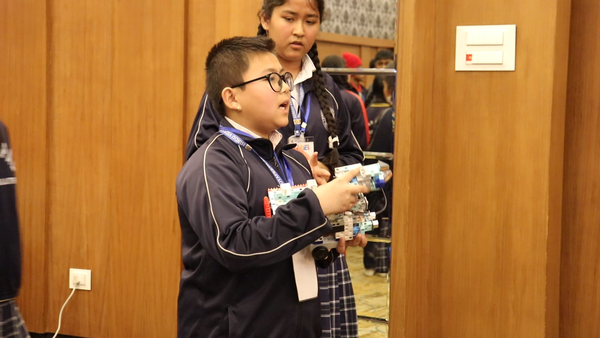
A Walk Through the Robotics Journey: "From Kits to Competitions"
April 3, 2025 Robotics and Programming OLE Nepal | Hrishav Raj Joshi
The Robotics project, initiated by OLE Nepal on May 1, 2024, and concluded on February 15, 2025, was designed to introduce an interactive and engaging STEM (Science, Technology, Engineering, and Mathematics) education platform to students in government schools within Lalitpur Metropolitan City. The primary objective was to address the limited exposure to practical, hands-on learning opportunities in Nepal’s public education system, particularly for students from underprivileged backgrounds. By integrating robotics into the curriculum, the project aimed to enhance students’ problem-solving abilities, foster logical reasoning, and cultivate creative thinking, all while providing an enjoyable learning experience.
The initiative targeted students in grades 6 through 8 across 12 government schools, with participation based on voluntary interest rather than mandatory enrollment. Approximately 20 students per school engaged in the program, resulting in a total of around 200 participants. The participating institutions were Balbinod Secondary School, Harisiddhi Secondary School, Hindhu Vidhyapit School, Mahalaxmi Secondary School, Prabhat Higher Secondary School, Sharmik Balbigyan Basic School (Pulchowk), Shram Jeet Kishor Secondary School, Adarsha Kanya Niketan Higher Secondary School, Yasodhara Boudha Secondary School, Lalit Kalyan School, Jalpa Secondary School, and Shreeshanti School. A designated robotics trainer conducted weekly sessions at each school, with each class lasting 2.5 hours. These sessions provided students with direct, practical experience in constructing and programming robots. To ensure long-term sustainability, focal teachers from the participating schools were trained to support students independently when the trainer was unavailable.


Financial support for the project was provided by the KDDI Foundation of Japan and Lalitpur Metropolitan City. This funding enabled the procurement of ARTEK Robotics Education kits, which served as the primary learning tool. Each kit included basic sensors (e.g.,Light sensors, Accelerometer, infrared sensor), actuators, and Lego blocks for structural assembly, paired with Studuino, a Scratch-based drag-and-drop programming interface. This platform eliminated the need for students to learn complex coding syntax, allowing them to focus on logical design and experimentation. The kits’ modular design facilitated rapid assembly and disassembly, enabling students to explore a wide range of robot configurations using a single set of components. In 2024, the curriculum was enhanced with the addition of advanced components—specifically Ultrasonic sensors and LCD displays—beyond the kits’ standard infrared sensor. These additions enabled students to undertake more sophisticated projects, such as maze-solving and object-collecting robots, aligning educational tools with mainstream robotics applications.
To strengthen the program’s foundation, OLE Nepal organized two supplementary Training of Trainers (TOT) sessions. Three teachers from each of 10 schools, totaling 30 educators, participated in these sessions, equipping them with the knowledge to independently guide students in robotics. Jalpa Secondary School and Shreeshanti School did not participate in the TOT. Additionally, a Robotics Winter Camp was conducted, involving five students from each of the same 10 schools, totaling 50 participants. This camp provided intensive training to prepare students for the culminating Robotics Challenge. The consistent involvement of 10 schools in these supplementary activities highlights a strong commitment from most participants, despite the absence of Jalpa Secondary School and Shreeshanti School.
The project concluded with a Robotics Challenge on February 15, 2025, requiring students to design and construct two robots: an Automatic Object Picker Robot and a Maze-Solving Robot, both utilizing the ARTEK kits and enhanced sensors. Despite the kits’ limitations, designed primarily for educational purposes rather than robust engineering applications, the majority of students successfully completed both tasks. The Ultrasonic sensors proved instrumental in enabling proximity detection and navigation, compensating for the infrared sensor’s constraints. Adarsha Kanya Niketan Higher Secondary School did not participate in the challenge but contributed to the subsequent exhibition.


Following the challenge, a robotics exhibition allowed students to showcase self-directed projects. All 12 schools participated, with Adarsha Kanya Niketan rejoining for this segment. The exhibition featured an impressive array of innovative designs, including transformer robots, bipedal robots, functional lift systems, cable cars, and other original creations. This event underscored the students’ ability to apply their skills creatively and independently, reflecting the program’s success in fostering abstract thinking and technical proficiency.
In summary, the Robotics project achieved its objectives of enhancing STEM education for approximately 150 students across 12 government schools. The hands-on training, supported by 30 trained focal teachers, has established a sustainable framework for continued learning. While participation varied, Jalpa Secondary School and Shreeshanti School opted out of the TOT and Winter Camp, and Adarsha Kanya Niketan skipped the challenge, the overall outcomes were positive. The majority of students mastered the assigned challenges, and the exhibition highlighted their ingenuity. This initiative has laid a strong foundation for future STEM engagement in Nepal’s public schools, equipping both students and educators with valuable skills and resources.

